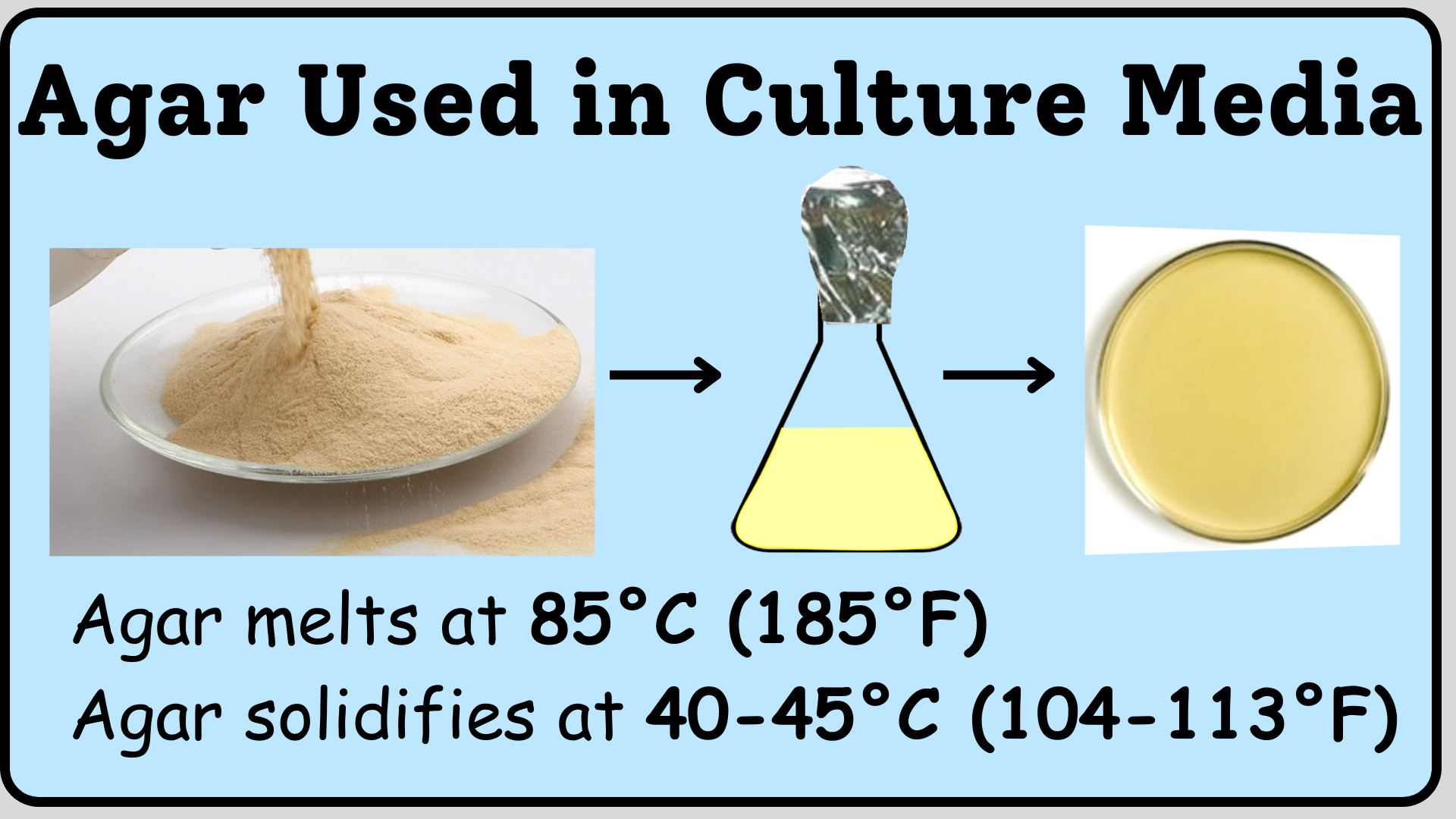Agar is a popular substance present in culture media. It is a special type of material for growing microorganisms such as bacteria and fungi. The main use of Agar in the culture media to create a solid surface on which microorganisms can grow. This allows scientists to study and identify different types of microorganisms.
In microbiology, agar is a common solidifying agent for creating nutrient-rich media to grow microorganisms. There are various types of agar media, including Nutrient Agar, Blood Agar, MacConkey Agar, Sabouraud Agar, Mannitol Salt Agar, EMB Agar, and Thayer-Martin Agar. Each of these media has its own specific purpose and composition.
Why agar is a valuable substance for microbiology research:
- Provides a solid surface for microorganisms to grow: Agar addition in culture media is for creation of solid surface. On which microorganisms can grow, making it easier for scientists to study and identify different types of microorganisms.
- Transparent: Agar is transparent, which makes it easy to see the growth of microorganisms on the surface of the agar.
- Low nutrient content: Agar has a low nutrient content, which makes it a suitable medium for a wide range of experiments, as it minimizes the risk of contaminating the culture with unwanted microorganisms.
- Inert: Agar is relatively inert, meaning it does not react with most chemicals or biological substances, making it a suitable medium for a wide range of experiments.
- Easy to handle: Agar is easy to handle. One can store agar at low temperatures and use as an when require for experiments.
- Wide availability: Agar is readily available and relatively inexpensive, making it an accessible substance for microbiology research.
- Suitable for a wide range of microorganisms: Agar is suitable for growing a wide range of microorganisms, including bacteria, fungi, and yeasts, making it a versatile substance for microbiology research.
Agar agar is obtained from
Agar agar comes from seaweeds that grows in the ocean. These seaweed are nothing but a type of red algae. Agar agar is obtained from the cell walls of certain species of red algae such as Gelidium, Gracilaria, and Pterocladia. People make this powder by boiling the seaweed and then drying it. In science, people use agar agar to grow bacteria and other tiny living things. It has many other uses in different industries too.
Agar powder melting and solidification
Agar powder can turn liquids into gels when heated and cooled. You mix agar powder into a liquid and heat it to around 40-45°C (104-113°F) until it dissolves to create a solution. When the solution cools, the agar molecules bond together, forming a gel that can hold its shape. This process is solidification.
To melt the agar gel and turn it back into a liquid, you heat it up to around 85°C (185°F). This breaks down the three-dimensional network of agar molecules, and it returns to its liquid state. This process is liquefaction or melting.
Scientists and food manufacturers can control the texture of the agar gel by changing the concentration of the agar powder, the temperature, and other factors. This helps them create agar gels with different textures and properties to suit their specific needs.

Concentration of Agar Used in Culture Media
The concentration of agar used in culture media can vary depending on the specific needs of the experiment or application. Typically, agar concentrations range from 0.5% to 2%, with 1.5% being the most commonly used concentration. Lower concentrations of agar are used for liquid media, while higher concentrations are used for solid media. The concentration of agar used can affect the firmness of the medium and the growth of microorganisms, so it is important to choose the appropriate concentration based on the specific requirements of the experiment.
Application of Agar Agar Powder
The science behind agar powder solidification and melting is important for various applications such as food science, microbiology, and biotechnology. Agar powder is commonly used in microbiology laboratories as a medium for growing microorganisms, as well as in the food industry to create various products such as desserts, jellies, and candies.
Conclusion of Agar Used in Culture Media
In conclusion, agar is a versatile substance that has many valuable properties for microbiology research, including providing a solid surface for microorganisms to grow, transparency, low nutrient content, inertness, easy handling, wide availability, and suitability for a wide range of microorganisms. Its application in microbiology research and other industries makes it an important substance for various scientific and practical purposes.
MCQ on Agar-Agar in microbiology
Hello, thank you for this Blog and for this article. I am looking for different industrial processes for extracting Agar Agar from red algae.
If you can help me with this, I would be grateful.
Thank you
Adnan Zarouk
zarouk.adnan@gmail.com